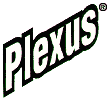1001 USES

Aerosols Work For You
Before you left home this morning, you probably reached for an aerosol container to apply shaving cream or hair spray. When you get home this evening, you may use a low-cholesterol cooking spray or an aerosol cleaning product. Americans now use more than 1,500 kinds of aerosol products at home and at work.


The aerosol container is a sophisticated, high-technology package in which a product - household cleaners, disinfectant, deodorant, insect repellent, paint and hundreds of others - is dispensed under pressure to create a spray or foam.
The aerosol package is designed to let you buy what you need, store it for use when you need it, and apply it quickly and cleanly. And, like so many other things that have become a part of our everyday lives, it's easy to take for granted.
Myths And Misperceptions
According to a 1991 Roper poll commissioned by S. C. Johnson & Son, a majority of Americans - about 86 percent - think that the aerosol industry is allowed to use chlorofluorocarbon (CFC) propellants in its products. The truth is, aerosol manufacturers in the United States are now allowed to use, and don't use, CFC propellants.The aerosol industry began phasing out CFCs in the mid-1970s. The U. S. Environmental Protection Agency issued regulations prohibiting the use of CFC propellants. Several other countries have banned CFC use as well, including Canada, Great Britain, Australia, and Mexico. Today, more than 99 percent of the consumer aerosol products produced in this country do not contain CFC propellants. The few that do - less than one percent, mostly asthma inhalers and some medications - do so with government approval.
How An Aerosol Works
The aerosol package is a self-contained dispensing system with three main elements:
The product is a blend of active ingredients, like soap or disinfectant; inert (or inactive) ingredients, like water; and propellant.
The propellant is a gaseous compound which pushes the product out of the container and produces a spray or foam. In most cases, the propellant also acts as a solvent to keep the product at the proper strength. In the United States, the most common propellants are naturally occurring hydrocarbons. A few products, about 10 percent of today's aerosols, use compressed gasses like carbon dioxide and nitrous oxide as propellants.
The final element is the container, which is usually a steel or aluminum can. The leak-proof can protects the product from contamination and evaporation.
All of these pieces work together based on simple scientific principles. An aerosol package is an air-tight, pressurized container. Pressing the actuator button opens the valve. Since the pressure outside the can is less than the pressure inside, the propellant expands, pushing the product up the dip tube and out through the valve. This system allows the product to be applied in a variety of ways; in a fine mist, a metered spray delivering just the right amount, a foam, or even a long-distance spray.
Safety And Disposal
Like most household or personal care products, aerosols are not hazardous when handled and disposed of properly. Reading and following the instructions printed on the label will ensure proper and safe use. The label instructions are there for your protection.The best way to dispose of an empty aerosol container is to recycle it. Most aerosol cans are made of steel, and can be recycled like any other empty steel cans. A growing number of communities accept empty aerosol cans together with other metal containers; check with your local recycling coordinator, however, before putting any material in your recycling bin. Be sure to use the product up, and then put the container in the trash with your other solid waste if recycling is not available.

Aerosols Work For You

Fifty years ago during World War II, scientists at the U. S. Department of Agriculture created the first aerosol spray to protect soldiers in the South Pacific from disease-carrying insects. Those backpack canisters were large and hard to handle, but the spray was effective. Today, thanks to improved technology, light-weight, low-pressure sprays can be found in hundreds of different sizes and shapes. From purse-sized breath atomizers to family-sized bathroom cleaners, aerosol products can be found in almost every home and workplace, providing products that improve our health, comfort and quality of life.

Because they are effective and easy to use, aerosol products are something we all take for granted. But that's the way it should be - aerosols are designed to be part of our everyday lives.